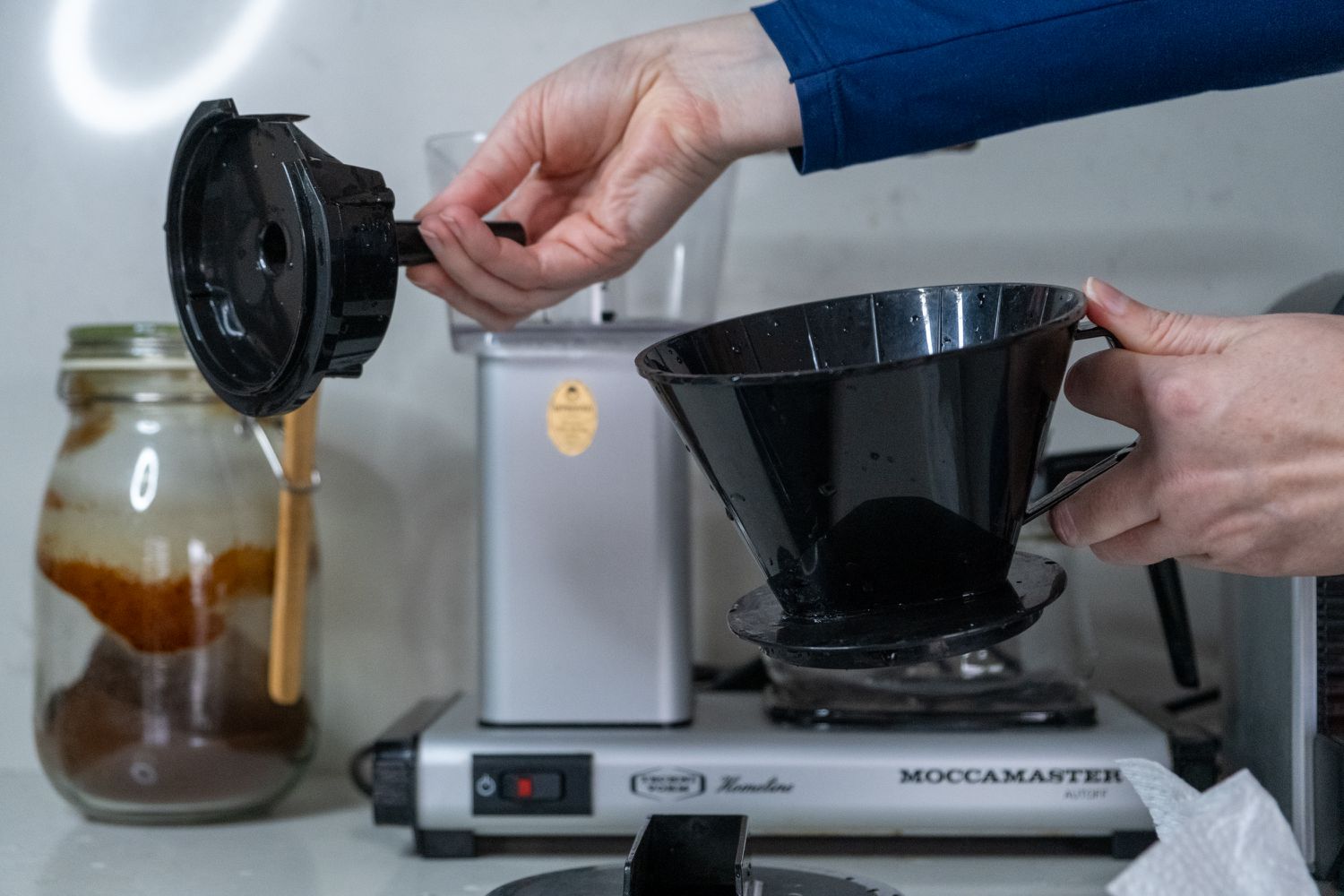Imagine waking up in the morning, groggy and in desperate need of a cup of coffee to kickstart your day. You shuffle over to the kitchen, grind your favorite beans, and eagerly reach for your trusty coffee maker. But wait, you suddenly remember that you’ve recently switched to using milk alternatives. The question arises: can you use these milk alternatives in your beloved coffee maker? Well, fear not, because in this article, we’ll explore the answer to this very question and provide you with some handy tips for achieving the perfect coffee using milk alternatives.
Introduction
Importance of milk alternatives in coffee
Using milk alternatives in coffee has become increasingly popular for various reasons. Whether you have dietary restrictions, allergies, or simply prefer a plant-based lifestyle, milk alternatives provide a suitable substitute for traditional dairy milk. Additionally, milk alternatives offer a range of flavors and textures that can enhance the taste of your coffee. In this article, we will explore the benefits of using milk alternatives in coffee and discuss the different types available.
Benefits of using milk alternatives
There are several benefits to using milk alternatives in your coffee. Firstly, it allows individuals who are lactose intolerant, vegan, or have dairy allergies to enjoy their coffee without discomfort. Secondly, milk alternatives offer a wider variety of flavors and textures, allowing you to experiment and find the perfect complement to your coffee. Lastly, using milk alternatives supports environmental sustainability by reducing the demand for dairy products. Overall, incorporating milk alternatives into your coffee can be a healthier and more inclusive choice.
What is a coffee maker?
Before we dive into the world of milk alternatives in coffee, let’s briefly discuss what a coffee maker is. A coffee maker is a kitchen appliance used to brew coffee. It typically consists of a water reservoir, a heating element, and a filter basket where you place your coffee grounds. There are various types of coffee makers available, including drip coffee makers, espresso machines, and French presses. Each type has different functionalities and considerations when using milk alternatives.
Types of Milk Alternatives
Soy milk
Soy milk is a popular milk alternative that is made from soybeans. It has a creamy texture and a slightly nutty flavor. Soy milk is known for its ability to froth well, making it an excellent choice for creating lattes or cappuccinos. It is also rich in protein and can provide a taste similar to regular dairy milk.
Almond milk
Another widely consumed milk alternative is almond milk, which is made from ground almonds and water. Almond milk has a subtly sweet flavor and a smooth consistency. It pairs well with coffee and can add a hint of nuttiness to your brew. Almond milk is low in calories and fat, making it a healthier choice for those watching their intake.
Coconut milk
Coconut milk is a popular choice for those seeking a creamier and tropical flavor in their coffee. It is made from the flesh of a mature coconut and has a rich and velvety texture. Coconut milk adds a unique sweetness to coffee and is often used in specialty drinks such as coconut lattes or mochas.
Oat milk
Oat milk has gained significant popularity in recent years due to its creamy texture and neutral taste. It is made by soaking and blending oats with water. Oat milk is a good choice for coffee as it blends well and provides a slightly sweet flavor. It is also a great option for individuals with nut allergies.
Rice milk
Rice milk is a milk alternative made from milled rice and water. It has a thin and watery consistency, similar to skim milk. Rice milk has a naturally sweet taste, which can complement certain coffee flavors. However, it may not be as suitable for frothing or creating creamy textures in coffee.
Cashew milk
Cashew milk is made from blending cashews with water, resulting in a creamy and rich milk alternative. It has a slightly nutty flavor that pairs well with coffee. Cashew milk is also a good source of healthy fats and can provide a smooth and velvety texture to your coffee.
Hemp milk
Hemp milk is a lesser-known milk alternative made from hemp seeds and water. It has a slightly nutty flavor and a thinner consistency compared to other milk alternatives. Hemp milk is a good option for individuals with soy or nut allergies and can add a unique twist to your coffee.
Considerations Before Using Milk Alternatives in a Coffee Maker
Compatibility with coffee maker
Before using milk alternatives in your coffee maker, it’s essential to consider whether the milk alternative you choose is compatible with your specific coffee maker. Some coffee makers, such as espresso machines, may require a milk frother or steaming wand to properly heat and froth the milk alternatives. On the other hand, simpler drip coffee makers may not have these capabilities, making it important to choose milk alternatives that can be easily incorporated.
Thinness and consistency
The thinness and consistency of milk alternatives can vary significantly. Some alternatives, like soy milk and oat milk, have a thicker consistency that resembles whole milk, while others, such as rice milk and hemp milk, have a much thinner and water-like consistency. Consider the type of coffee you prefer and how the consistency of the milk alternative may affect the overall taste and experience.
Flavor compatibility
Each milk alternative has its own unique flavor profile that may or may not pair well with your coffee. Consider the taste you are looking to achieve – whether you prefer a more neutral flavor like almond milk or a sweeter option like coconut milk. Experimenting with different milk alternatives can help you find the perfect balance and enhance your coffee experience.
Frothing capabilities
If you enjoy specialty drinks like lattes or cappuccinos, it’s essential to consider the frothing capabilities of the milk alternative you choose. Some alternatives, like soy milk and cashew milk, froth well and can create creamy and velvety textures. However, others, like rice milk and almond milk, may not froth as effectively, resulting in a different texture and mouthfeel.
Using Milk Alternatives in Drip Coffee Makers
Preparation
Using milk alternatives in a drip coffee maker is relatively straightforward. Simply ensure that your coffee maker is compatible with the milk alternative you have chosen. Before adding the milk alternative to your coffee, give it a good shake to mix any separation that may have occurred during storage.
Brewing process
When brewing coffee with milk alternatives in a drip coffee maker, it’s best to add the milk alternative to your cup or mug after the brewing process is complete. This prevents any separation or alteration of the milk alternative’s consistency during brewing. Pour your desired amount of coffee into your cup and then add the milk alternative according to your taste preferences.
Taste and texture
Using milk alternatives in a drip coffee maker can enhance the taste and provide a creamy texture to your coffee. The flavor and texture will vary depending on the milk alternative chosen. Experiment with different options to find which one complements your coffee the best.
Cleaning considerations
After using milk alternatives in a drip coffee maker, it’s important to clean the machine thoroughly to prevent any residue or build-up. Some milk alternatives, like rice milk, can leave a thin film or residue on the glass carafe or coffee maker parts. Regular cleaning with warm, soapy water and periodic descaling can help maintain the performance and longevity of your drip coffee maker.
Using Milk Alternatives in Espresso Machines
Considerations for espresso machines
Espresso machines offer more versatility when it comes to using milk alternatives. They often come equipped with a milk frothing wand or steam wand, allowing you to achieve the desired texture and temperature for your milk alternative. Ensure that your espresso machine is compatible with the milk alternative you choose and follow the manufacturer’s instructions for best results.
Steaming and frothing milk alternatives
When using milk alternatives in an espresso machine, it’s essential to properly steam and froth the milk alternative to achieve the desired texture and consistency. Start with a cold milk alternative and fill an appropriately sized stainless steel pitcher. Submerge the steam wand into the milk alternative and slowly release steam to create microfoam and heat the milk alternative. Practice and experimentation may be required to perfect the technique.
Creating latte art with milk alternatives
Milk alternatives can be used to create beautiful latte art, just like traditional dairy milk. With the right consistency and a steady hand, you can pour the milk alternative into your espresso shot to create intricate designs or patterns on the surface of your coffee. This adds an aesthetic appeal to your coffee and showcases your creativity.
Cleaning and maintenance
Cleaning an espresso machine after using milk alternatives is crucial to prevent any residue or clogs in the steam wand. After each use, purge the steam wand by releasing a burst of steam to remove any milk residue. Regularly cleaning and descaling your espresso machine according to the manufacturer’s instructions will ensure optimal performance and longevity.
Using Milk Alternatives in French Presses
Preparing coffee in a French press
Using milk alternatives in a French press requires a slightly different approach. Begin by adding coffee grounds to the French press, followed by hot water. Allow the coffee to steep for the desired amount of time, typically four to five minutes.
Adding milk alternatives to French press coffee
Once the coffee has steeped, slowly press the plunger down to separate the coffee grounds from the liquid. Pour the desired amount of coffee into your cup or mug, leaving space for the milk alternative. Add the milk alternative to your coffee in the same manner as you would with traditional milk, adjusting the amount to suit your taste preferences.
Taste and texture
When using milk alternatives in French press coffee, the taste and texture can vary depending on the milk alternative chosen. Some alternatives may add a slight sweetness, while others may contribute a creamier texture. Experimenting with different options will allow you to find the perfect combination that suits your coffee preferences.
Cleaning and aftercare
Cleaning a French press after using milk alternatives is relatively simple. Disassemble the French press and rinse all parts thoroughly with warm water. Additionally, wash the filter and plunger with mild soap to remove any residue. Proper cleaning and maintenance will ensure that your French press continues to produce delicious coffee.
Benefits of Using Milk Alternatives in Coffee
Dietary restrictions and allergies
One of the primary benefits of using milk alternatives in coffee is the ability to cater to dietary restrictions and allergies. Many individuals are lactose intolerant, have dairy allergies, or follow a vegan or plant-based diet. Milk alternatives provide a suitable substitute that allows them to enjoy their coffee without discomfort or compromising their dietary choices.
Health benefits
Milk alternatives offer various health benefits compared to traditional dairy milk. They are often lower in calories and fat, making them a healthier option for those who are conscious of their intake. Additionally, certain milk alternatives, such as soy milk, provide essential nutrients like protein, which can be beneficial for individuals with specific dietary needs.
Variety and flavor options
Using milk alternatives in coffee opens up a world of variety and flavor options. From the nuttiness of almond milk to the indulgence of coconut milk, each alternative brings its own unique taste to your cup of coffee. This variety allows you to experiment and find the perfect complement to your preferred coffee beans or flavors.
Environmental considerations
Choosing to use milk alternatives in your coffee supports environmental sustainability. Traditional dairy farming has a significant impact on the environment, including greenhouse gas emissions and water usage. By opting for plant-based milk alternatives, you can reduce your carbon footprint and contribute to a more sustainable future.
Potential Drawbacks of Using Milk Alternatives
Nutrient deficiencies
While milk alternatives can provide certain nutrients, they may lack others that are naturally present in dairy milk. For example, cow’s milk is an excellent source of calcium and vitamin D, which may be lower or absent in some milk alternatives. It’s important to ensure that you’re getting a well-rounded diet and considering other sources of these nutrients if you rely solely on milk alternatives.
Allergies and sensitivities
Although milk alternatives offer alternatives for individuals with dairy allergies, they may still cause allergies or sensitivities in some individuals. Nut-based milk alternatives, such as almond or cashew milk, can trigger allergic reactions in those with nut allergies. It’s crucial to be aware of your own allergies and sensitivities and choose milk alternatives accordingly.
Taste and texture differences
Using milk alternatives in coffee can result in taste and texture differences compared to traditional dairy milk. While many milk alternatives aim to closely mimic the taste and texture of milk, there may still be slight variations. It may take some time to find the milk alternative that best suits your palate and preferences.
Availability and cost
Not all milk alternatives may be readily available in your area, particularly if you live in a more rural or remote location. Additionally, milk alternatives can sometimes be more expensive than dairy milk, which may impact your budget. It’s important to consider availability and cost when deciding whether to use milk alternatives in your coffee.
Tips for Using Milk Alternatives in Coffee Makers
Experiment with different brands and types
Not all milk alternatives are created equal, so it’s important to experiment with different brands and types to find the ones that suit your taste preferences and coffee maker. Some brands may provide a creamier texture or a more pronounced flavor, while others may froth better or blend seamlessly with your coffee. Keep an open mind and try different options until you find your favorite.
Adjusting brewing methods
When using milk alternatives in your coffee maker, you may need to adjust your brewing methods slightly. This could include altering the amount of coffee, water, or milk alternative used to achieve the desired taste and strength. Be willing to experiment and tweak your brewing methods until you find the perfect balance.
Adding flavor enhancements
If you find that your milk alternative of choice doesn’t add enough flavor to your coffee, consider adding flavor enhancements such as spices, syrups, or extracts. For example, you could add a sprinkle of cinnamon or a pump of vanilla syrup to elevate the taste of your coffee. These additions can complement and enhance the flavors of the milk alternative to create a more enjoyable coffee experience.
Proper storage and refrigeration
Milk alternatives typically require refrigeration after opening, so it’s important to follow the storage instructions on the packaging. Improper storage can affect the taste and quality of the milk alternative. Ensure that the milk alternative is sealed tightly and stored in the appropriate temperature range to maintain its freshness and consistency.
Conclusion
The use of milk alternatives in coffee makers has become increasingly popular due to the range of benefits they offer. Whether you have dietary restrictions, health concerns, or simply prefer the taste of plant-based milk, milk alternatives provide a suitable substitute for traditional dairy milk. With various options available, such as soy, almond, coconut, oat, rice, cashew, and hemp milk, there is a milk alternative to suit every preference and coffee maker. By considering compatibility, taste, texture, and frothing capabilities, you can enjoy delicious coffee with your chosen milk alternative. The availability of different brands and types allows for experimentation and customization to find the perfect combination for your unique taste. So, go ahead and explore the world of milk alternatives in your coffee maker – you may just discover a new favorite brew.




